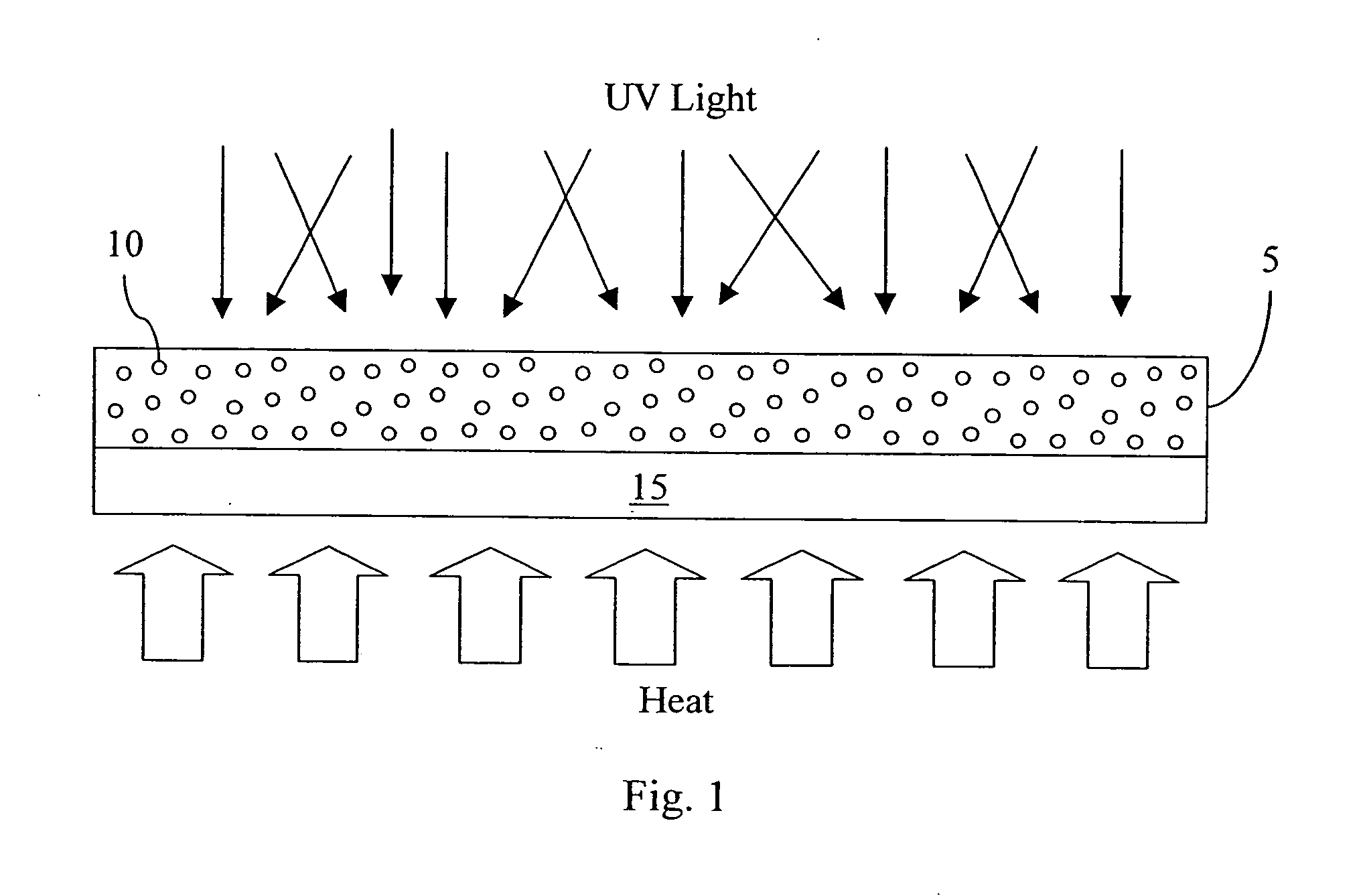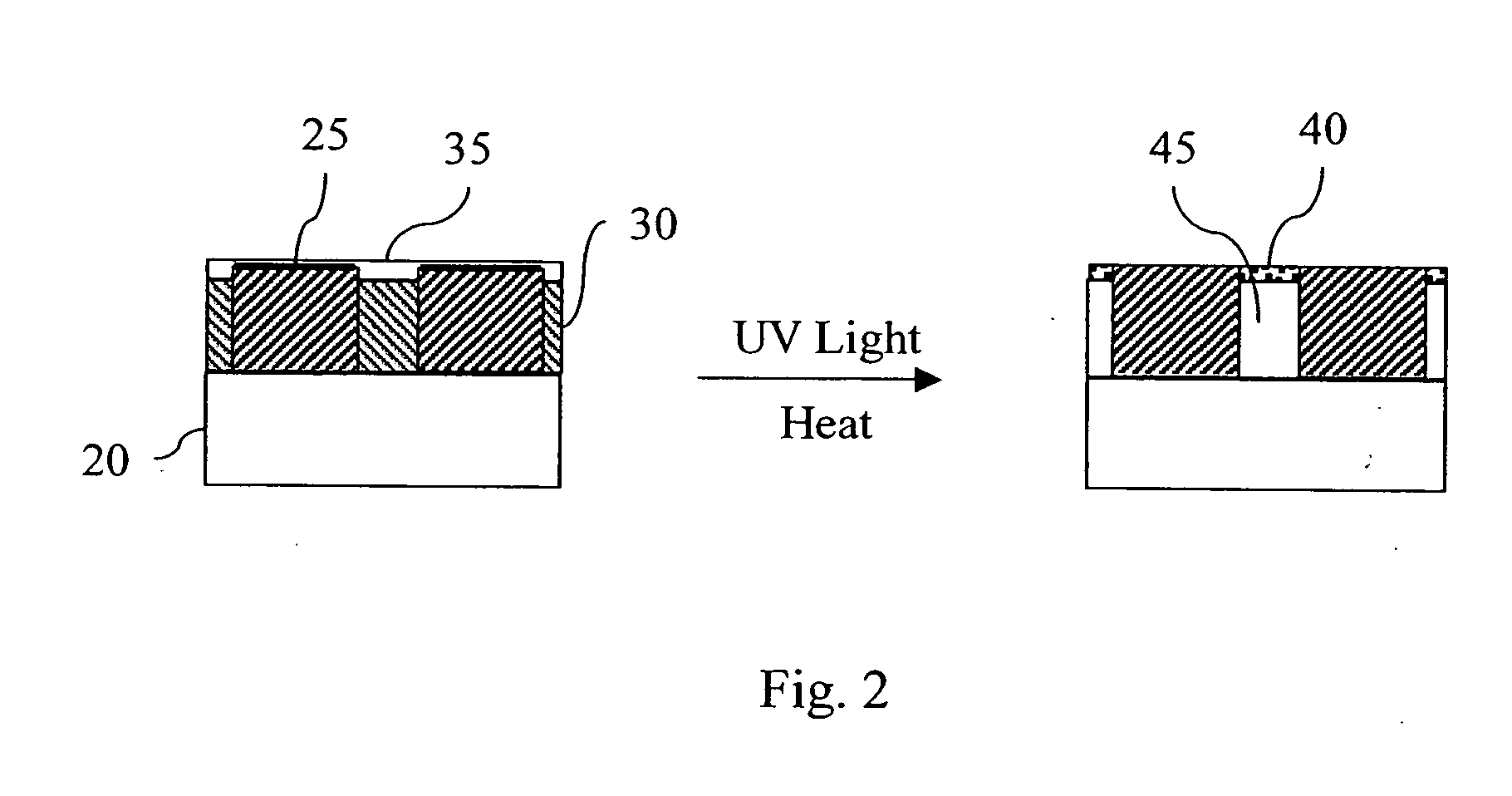Porous materials
a technology of porous materials and materials, applied in the field of porous materials, can solve the problems of increasing the number of process steps required, not having sufficient mechanical strength to withstand the forces and stresses used in the manufacture of semiconductor devices, and achieving the effects of improving mechanical properties, improving electrical properties, and improving mechanical properties
- Summary
- Abstract
- Description
- Claims
- Application Information
AI Technical Summary
Benefits of technology
Problems solved by technology
Method used
Image
Examples
example 1
[0063] A 1 L 3-neck round bottom flask equipped with a thermometer, condenser, nitrogen inlet, and magnetic stirrer was charged with 120 g of propylene glycol methyl ether acetate (“PGMEA”), 41.8 g of deionized (“DI”) H20, 40 g of EtOH, and 0.56 g of 0.0959 N HCl water solution. After stirring for 5 min., 64.0 g (0.36 mol) of methyl triethoxysilane (“MTES”) and 64.0 g (0.31 mol) of tetraethoxysilane (“TEOS”) were mixed and charged to the flask. The catalyst concentration was about 8 ppm. The cloudy mixture became clear in 30 min. and was stirred for additional 30 min. Then it was heated to 78° C. and held at 78°- 82° C. for 1 hr. After cooling to room temperature, the reaction mixture was charged 10:1 on a weight basis (partial condensate solution to ion exchange resin) with conditioned IRA-67 ion exchange resin in a NALGENE™ high density polyethylene (“HDPE”) bottle. The resulting slurry was agitated using a roller for 1 hr. The IRA-67 resin was removed by filtration. 80g of PGMEA ...
example 2
[0065] A porogen polymer particle solution including as polymerized units 90 wt % methoxypolypropyleneglycol(260) acrylate cross-linked with 10 wt % trimethylolpropane trimethacrylate in propylene glycol methyl ether acetate was prepared according to the procedure disclosed in U.S. Pat. No. 6,420,441.
example 3
[0066] Composite solution samples were prepared by combining the solutions described in Examples 1 and 2 at the varying ratio shown in Table 2 on a dry weight basis. Thus, 84 parts on a dry weight basis of SSQ partial condensate prepared by the procedure of Example 1 and 16 parts on a dry weight basis of the porogen polymer particles prepared by the procedure of Example 2 were combined to provide Sample 1. The Comparative Sample contained only SSQ partial condensate and no porogen polymer. Sufficient solvent was added to achieve a final solids level of 20% or less. The solution was then passed through an ion-exchanged comprised of a mixed bed resin comprising AMBERLITE™ IRA-67 anion resin and IRC-748 chelating cation exchange resin (both resins available from Rohm and Haas Company). The solution was then filtered using a 0.1 μm filter. Finally, the solution was stabilized by the addition of a 100 ppm malonic acid based on the weight of SSQ partial condensate.
[0067] A portion of eac...
PUM
| Property | Measurement | Unit |
|---|---|---|
| temperature | aaaaa | aaaaa |
| thickness | aaaaa | aaaaa |
| mole ratios | aaaaa | aaaaa |
Abstract
Description
Claims
Application Information
 Login to View More
Login to View More - Generate Ideas
- Intellectual Property
- Life Sciences
- Materials
- Tech Scout
- Unparalleled Data Quality
- Higher Quality Content
- 60% Fewer Hallucinations
Browse by: Latest US Patents, China's latest patents, Technical Efficacy Thesaurus, Application Domain, Technology Topic, Popular Technical Reports.
© 2025 PatSnap. All rights reserved.Legal|Privacy policy|Modern Slavery Act Transparency Statement|Sitemap|About US| Contact US: help@patsnap.com



